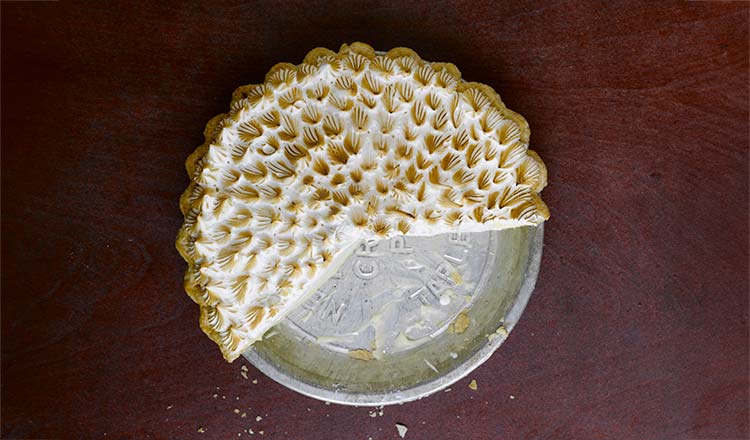Selecting bakeware for your pies and tarts is an essential step in creating a superior product. A pie or tart dough will bake differently depending on the kind of pan in which it is baked, and an inferior pan can adversely affect the crust of your pies and tarts. It is also important to use the correct size pan.
There are a wide variety of materials being used today for bakeware. Each type has advantages and disadvantages.
Aluminum and aluminum-coated steel are the most common metals used for bakeware. They conduct heat efficiently and bake items evenly and quickly. Shiny metal pans reflect the oven heat away from the pan and slow down bake time, which can result in a soggy, underbaked crust. Black or dark-colored metal pans absorb heat and transfer it to the crust, typically browning crusts faster. Many pans have a nonstick coating that prevents the crust from sticking, but this coating can be scratched when cutting or serving the pie. The coating can also act as an insulator between the crust and the pan, making it more difficult to brown the crust.
Porcelain, ceramic, and stoneware are slow to absorb heat and bake a crust, resulting in longer bake times. Once hot, these materials readily retain their heat and transfer it evenly to the crust. An advantage of these vessels is that they can go from freezer to oven to table seamlessly.
Tempered glass pie pans heat up very quickly and transfer the heat to the crust, baking it faster than metal pans. Glass pie plates are readily available and a popular choice. They have the added benefit of allowing the baker to see the browning of the bottom crust.
Silicone is being used for pie pans and a variety of other bakeware, such as cupcake pans. However, silicone is a poor conductor of heat and crusts will be slow to bake, although they will brown more evenly. Silicone pans need to be placed on a baking sheet for support, which can make transferring them to a cooling rack difficult; without the support of the baking sheet, the bottom of the flexible pan is more likely to buckle.
Pie pans
With sloped sides, this standard-size pie tin is available in several materials. Glass and aluminum pie pans are the most popular and readily available. They generally measure 9 to 10 inches, 1 to 1¼ inches deep, with a capacity of about 4½ cups.
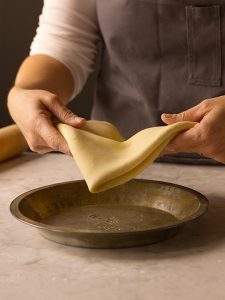
Deep Pie Dishes
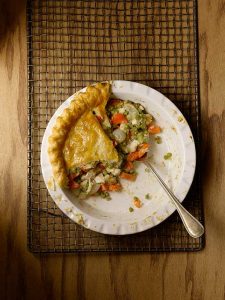
Typically made of ceramic or stoneware, these pie dishes are deeper and wider than a traditional pie pan, often 9½ inches, 2 to 3 inches deep, and with a capacity of 7 cups.
Flan Rings
These are bottomless stainless-steel rings, available in several sizes and with straight sides or rolled edges. The standard depth is ¾ inch and diameters range from 2½ inches to 11 inches. Used with a baking sheet and parchment, these rings can be lined with tart dough and baked.
Tart and Tartlet Pans

These shallow tinned steel pans are available in a variety of shapes and sizes. The surfaces can be regular or nonstick, sides can be fluted or straight, and bottoms can be stationary or removable. The most versatile large tart pan is a 9-inch pan with a removable bottom that is easy to unmold.
Quiche Dishes
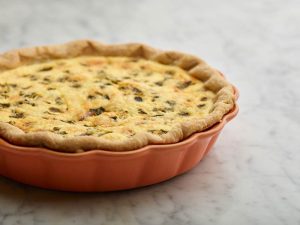
These baking dishes are shallow, usually made of porcelain, and have decorative fluted edges. They are attractive for serving savory quiches. Typical quiche dishes measure 10 to 11 inches, 1 inch deep, with a capacity of 6½ cups.
Springform Pans
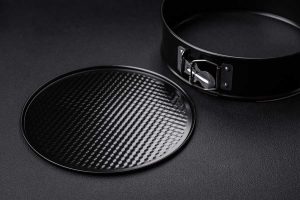
These are round metal pans composed of two parts: a flat bottom and a deep, straight sided outer ring with a metal clamp. When closed, the clamp tightens the outer ring and holds the bottom in place. Typically used for cakes, springform pans also are selected to bake deep quiches. Diameters range from 6 to 12 inches, with depths of 2½ to 3 inches.

